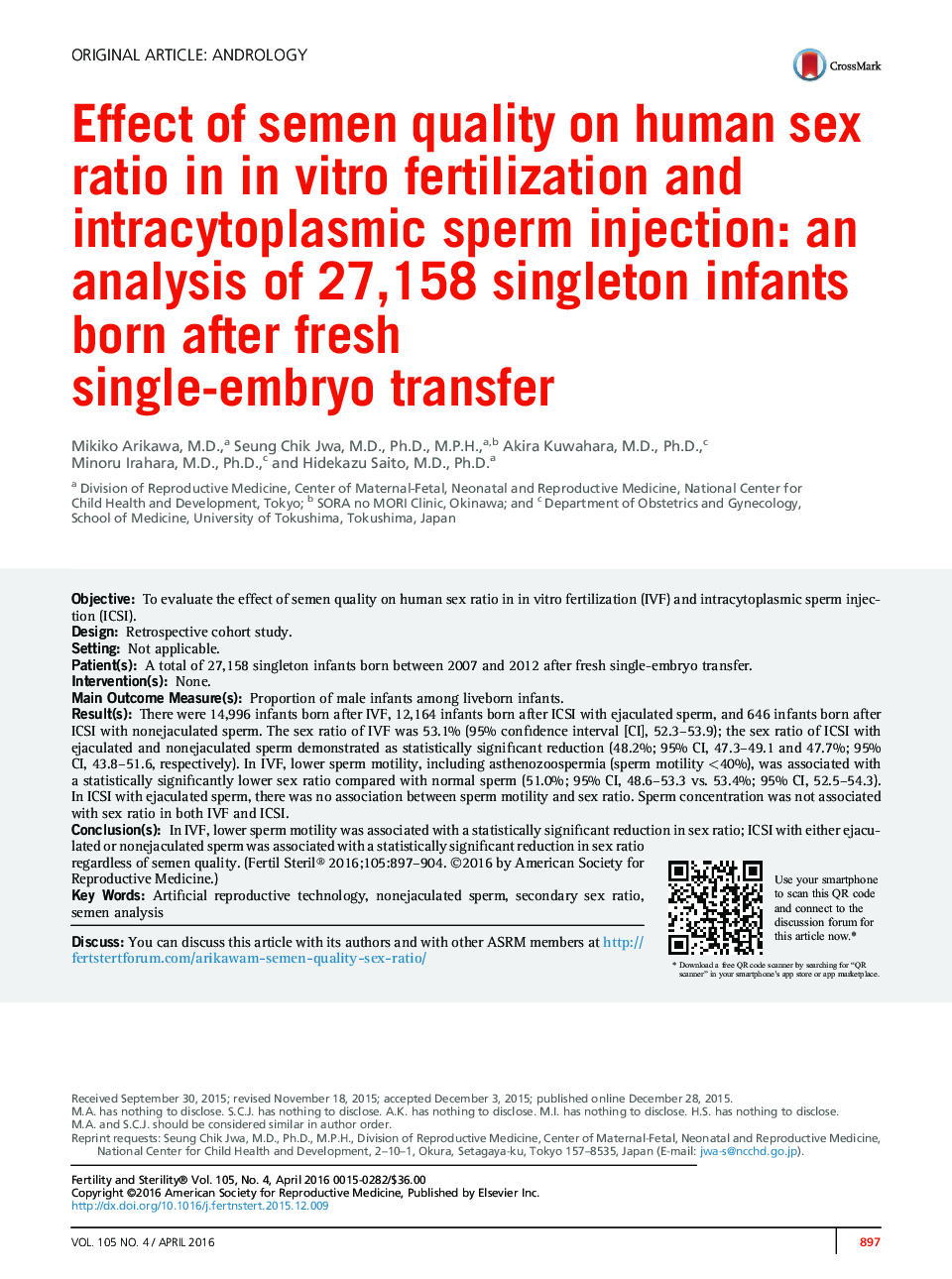| Article ID | Journal | Published Year | Pages | File Type |
|---|---|---|---|---|
| 3935368 | Fertility and Sterility | 2016 | 8 Pages |
ObjectiveTo evaluate the effect of semen quality on human sex ratio in in vitro fertilization (IVF) and intracytoplasmic sperm injection (ICSI).DesignRetrospective cohort study.SettingNot applicable.Patient(s)A total of 27,158 singleton infants born between 2007 and 2012 after fresh single-embryo transfer.Intervention(s)None.Main Outcome Measure(s)Proportion of male infants among liveborn infants.Result(s)There were 14,996 infants born after IVF, 12,164 infants born after ICSI with ejaculated sperm, and 646 infants born after ICSI with nonejaculated sperm. The sex ratio of IVF was 53.1% (95% confidence interval [CI], 52.3–53.9); the sex ratio of ICSI with ejaculated and nonejaculated sperm demonstrated as statistically significant reduction (48.2%; 95% CI, 47.3–49.1 and 47.7%; 95% CI, 43.8–51.6, respectively). In IVF, lower sperm motility, including asthenozoospermia (sperm motility <40%), was associated with a statistically significantly lower sex ratio compared with normal sperm (51.0%; 95% CI, 48.6–53.3 vs. 53.4%; 95% CI, 52.5–54.3). In ICSI with ejaculated sperm, there was no association between sperm motility and sex ratio. Sperm concentration was not associated with sex ratio in both IVF and ICSI.Conclusion(s)In IVF, lower sperm motility was associated with a statistically significant reduction in sex ratio; ICSI with either ejaculated or nonejaculated sperm was associated with a statistically significant reduction in sex ratio regardless of semen quality.
